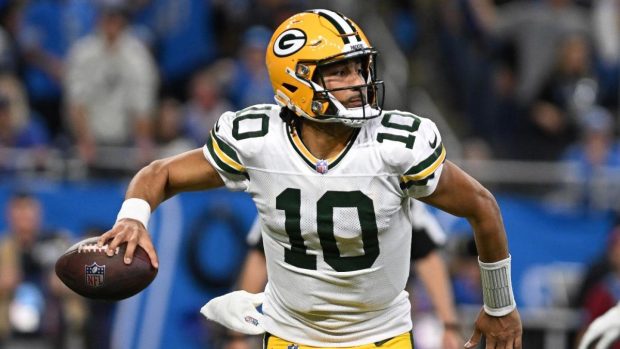
SAN FRANCISCO — Justin Verlander struck out the side in the first inning Sunday afternoon, walked off the mound to a standing ovation and doffed his cap to the crowd.
Verlander became the 10th pitcher in major-league history to reach 3,500 career strikeouts. He descended the dugout steps to waves of handshakes and back slaps. The baseball was set aside and authenticated. After the game, clubhouse officials removed the green K panel from the right-field arcade and presented it to Verlander as a memento of the achievement.
Advertisement
After the first inning? Throw everything out. Maybe squirt some lighter fluid on it and strike a match, just to be sure. The San Francisco Giants played the most forgettable game of the season in an 8-0 loss to the Washington Nationals, and as appalling as the final score might have felt, it should’ve been worse. The Nationals, one of the most downtrodden teams in the major leagues, outhit the Giants 17-3 and didn’t bother with a doggie bag while leaving 10 runners on base.
No wonder Giants manager Bob Melvin had a tough time gushing about Verlander’s career accomplishment after the game.
“The rest was awful,” Melvin said. “I mean, we have 40,000 people here, we don’t give ’em anything to root for the entire game other than that. So unfortunately, that probably is as disappointing a game as we’ve had all year.”
The Giants sold 40,089 fully nonrefundable tickets, and the nicest thing they accomplished for their fans was not wasting more of their sun-splashed Sunday afternoon. Do you know how difficult it is to give up 17 hits and lose in two hours, 24 minutes? That’s a reflection on how the Giants’ lineup performed — efficient, ineffective and worthy of a few other eff-related adjectives — against left-hander MacKenzie Gore and three relievers. The result was the Giants’ 10th home loss in 11 games and yet another home series dropped to a glass-jawed opponent.
The Nationals might as well be the Washington Generals these days. They fired their manager and general manager at the All-Star break, and they’ve spiraled from there. They came to San Francisco having lost seven of eight, in which they were outscored 28-77. Their arrival appeared to come at a perfect time for the Giants, who’d won consecutive road series and were hoping to roll positive momentum into a critical swath of the season in which they’ll play seven of 10 games against the San Diego Padres, the team they’re most actively chasing for the final NL wild-card spot.
Advertisement
But maybe it’s time to throw out the strength-of-schedule analysis, too. Once again, the Giants failed to beat a team they are supposed to beat. After losing two of three to the Nationals, they fell to 28-28 against opponents with sub-.500 records. They are also just 29-28 at their waterfront ballpark. For all the talk about building a roster with a dynamic, contact-oriented lineup and airtight defense behind a solid pitching staff, the Giants haven’t consistently demonstrated the attributes required to leverage any kind of home-field advantage.
Did we mention the no-refund policy?
“I thought we were going to play a good game today. I really did,” Melvin said. “And unfortunately, we did not.”
MLB HISTORY
Justin Verlander becomes just the 10th pitcher with 3,500 career strikeouts! pic.twitter.com/WoiEBQlhjb
— MLB (@MLB) August 10, 2025
Why have the Giants become a broken team in their own ballpark? There isn’t one simple answer, even if the lack of run production goes a long way toward explaining it. The league average OPS is .713. The Giants have three hitters above that mark at home, and one of them, Mike Yastrzemski, got traded to the Kansas City Royals last week. The others, just barely, are Wilmer Flores and Jung Hoo Lee.
The Giants’ shoddy outfield defense is another factor. Lee has given back any value he’s created with the bat and then some in center field. Left fielder Heliot Ramos is statistically the worst outfielder in the major leagues. When the Giants made concessions to outfield defense in 2010 (Pat Burrell) and 2014 (Travis Ishikawa), it didn’t prevent them from winning World Series titles. But those teams also had Andres Torres and Gregor Blanco. Any time they’ve been a solid home team, they’ve caught the ball.
The Giants outfield ranks 29th in Total Zone Fielding Runs Above Average with minus-29. Only the Colorado Rockies are worse, and that’s probably because they play at Coors Field and the stat isn’t park-adjusted.
Advertisement
The overall defense has been especially disappointing behind Verlander, who entered Sunday having received minus-7 Outs Above Average from the teammates playing behind him — the sixth worst among major-league starters. (Giants right-hander Landen Roupp, who made a rehab start for Triple-A Sacramento on Sunday, is third on that lamentable list at minus-8 OAA.)
Verlander (1-9) was far from blameless Sunday. He allowed 11 hits in five innings, which was his most in a start since 2017. Nine of those 11 hits had an expected batting average above .340, and one of them, a two-run blast from CJ Abrams that clanked off the right-field pole in the second inning, came on the kind of hit-me slider that a pitcher regrets the moment the ball leaves their fingertips.
But there were two hits with an expected average of .170, too. One of them hung in the air and fell in front of Lee, who was playing so deep he didn’t even get close enough to attempt a dive.
As coincidental as it might seem, on the day Verlander struck out his 3,500th batter, he acknowledged he hasn’t been pitching for strikeouts. He is aware he hasn’t completed seven innings in any of his 20 starts and he’s made it through six just six times. He’s trying to generate more contact outs to manage his pitch count.
So it’s very inconvenient Verlander isn’t getting more outs on balls in play. He’s too professional to throw a teammate under the bus. He’s more than willing to complain about the traffic, though.
“I’m trying to get deeper in the game a bit, so some of these weak, 90 mph fly balls are ideal for pitchers,” Verlander said. “It just seems like they keep finding the right spot, finding grass. You can’t do anything. I don’t want to keep pitching to try to get swing-and-miss or strikeouts or anything like that. That’s not what pitching is about. Pitching is about keeping guys off balance and (avoiding) solid contact on the barrel. You’d like those to start being outs, and all of a sudden you find yourself deeper in the game. But I seem a little snakebitten.”
Verlander’s fastball touched 96.9 mph and averaged 95. The 42-year-old right-hander pushed back when asked whether he was frustrated by his stuff.
Advertisement
“Stuff’s great. Stuff’s fine,” he said. “I’ve spent a lot of time looking at comparables, and it’s right on par, literally almost up and down the board, with ’22 when I won the Cy Young. So I think the stuff is just fine. The results have been frustrating, yes.”
Melvin acknowledged some of the Nationals’ 17 hits had eyes. But not all of them.
“You get 17 hits, you’re going to hit some hard,” the manager said. “When you get 17 hits, you’re doing something right. And we’re not.”
It isn’t just the outfield defense that has become a detriment. The outfield personnel isn’t allowing Melvin to match up against left-handed starters, either. Jerar Encarnacion isn’t an option; the Grade 2 hamstring strain he suffered Wednesday in Pittsburgh will cause him to miss most of the remainder of the season. It’s no coincidence Tyler Fitzgerald, a right-handed hitter, made his first two starts of the season in right field for Triple-A Sacramento over the weekend.
Melvin ideally would’ve picked Sunday to give Lee a break — second consecutive day game, left-handed starter on the mound — but there weren’t any right-handed alternatives. Starting Grant McCray would’ve meant a particularly unappealing left-on-left matchup, given McCray’s strikeout issues and Gore’s 10.6 K/9 rate that ranks third among NL starters.
Another lefty hitter, rookie Drew Gilbert, started in right field for the third consecutive day. Although Gilbert is still looking for his first big-league hit (0 for 10, 4 strikeouts), at least he got a lot of practice playing balls off the bricks in right field.
Luis Matos hasn’t made enough hard contact to be an appealing option. Marco Luciano has done damage against Triple-A lefties, but he’s only played left field, and the Giants are having a hard enough time hiding Ramos there as it stands.
Advertisement
Whether the Giants cling to playoff relevance for another week or another month, they’ll have to use the remainder of the season to figure out a long-term plan for their outfield. Ramos has a 122 OPS+, and his 23-game on-base streak is the longest in the National League, but if he continues to be borderline unplayable in left field, then the Giants have one heck of a headache to manage. The easiest fix would be to slide him to designated hitter. But there will be velvet ropes around the DH spot in a long-term lineup anchored by Rafael Devers and Bryce Eldridge. Ideally, the Giants would acquire or develop a center fielder who could push Lee to left.
There are no easy answers. It’ll be up to Buster Posey, president of baseball operations, to figure it out.
For now, give Posey credit for this much: He sold at the trade deadline, and if Sunday’s tire fire was any indication, he had the right read on this team.
“Look, they’re motivated,” Melvin said. “It doesn’t look like it when you play a game like that. We had a really tough stretch, we go through the trade deadline, don’t give (the front office) any reason to help, and then go on the road and actually play pretty well. … We still feel like we have a really good team, have a chance to win (a series) today, and just couldn’t put anything together.
“I’m frustrated for that. I’m frustrated that our fans come out and support us every night and we gave them literally nothing today.”
(Photo: Darren Yamashita / Imagn Images)
This news was originally published on this post .






Be the first to leave a comment